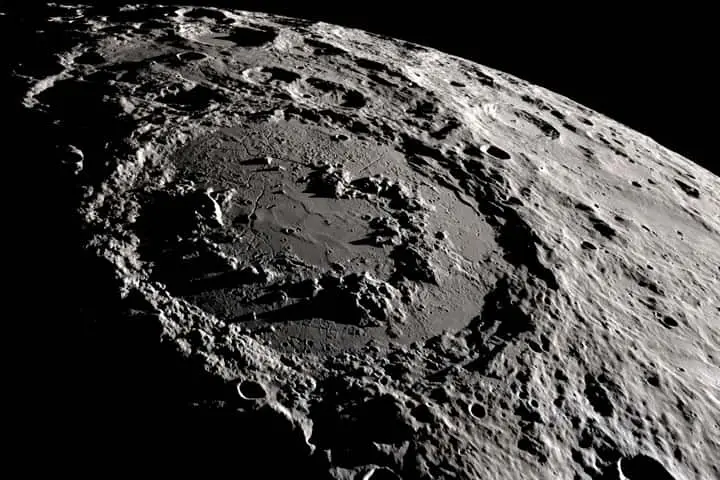Our perception of a volcano is reddish fire and destruction, which is conditioned by the images of molten lava wreaking havoc on human settlements and animal habitats. Yet, there is more to volcanoes than that, as pointed out by a report in sciencenews.org which states that a new study suggests how two billion years ago such volcanic eruptions on the moon led to water vapour becoming ice on its poles.
The details of this study have been reported in the Planetary Science Journal of May month.
The presence of ice on the moon was confirmed in 2009 and since then it has been argued as to how it came into being on the moon. The options discussed included comets, charged atoms carried by the solar wind, asteroids or that it originated on the moon itself because of eruptions in volcanoes between 4 to 2 billion years ago.
Planetary scientists from University of Colorado, Boulder Andrew Wilcoski observed: “It’s a really interesting question how those volatiles [such as water] got there. We still don’t really have a good handle on how much are there and where exactly they are.”
Along with colleagues, Wilcoski started the study by looking at the viability of volcanism as a source of lunar ice. At the zenith of lunar volcanism, the eruptions took place once every 22,000 years. Based on the assumption that H2O constituted about a third of volcano-spit gasses, as deduced from the ancient lunar magma samples, scientists worked out the eruptions had set free more than 20 quadrillion kilograms of water vapor in total. Interestingly, this is equal to 25 Lake Superiors.
A part of the vapour would have gone adrift in space when the light from sun broke the water molecules down or when these molecules got blown away due to solar winds. Yet at the poles which were frigid, some of the vapour would have got stuck to the surface as ice.
To make this possible it is necessary for the rate of condensation of water vapour to be more than what escapes the moon. Using a computer simulation, the researchers calculated and compared the rates. It was made sure that the simulation took into account factors like gas pressure, the loss of vapour to frost and surface temperature.
Based on the calculations it was found that nearly 40 per cent of the water vapour out of the eruptions could have collected as ice and most of it would be at the poles. With the passing of time – over billions of years – a part of the ice would have become vapour again and escaped into space. The scientists predicted not just the amount but also the distribution of ice which is remaining and this is no small quantity. Ice deposits could possibly reach hundreds of metres at the point which is the thickest and significantly the south pole had twice the ice as compared to the north pole.
What the study deduced is in tune with the assumption, a long-standing one, that poles of the moon are dominated by ice because it stays in cold traps which are so frigid that the ice remains frozen for billions of years.
Highlighting this, UCB’s Margaret Landis, a planetary scientist said: “There are some places at the lunar poles that are as cold as Pluto.”
The movement of water vapour coming from volcanic eruptions would have taken place because of an atmosphere, said Landis. This atmosphere was also vital as it did not allow the water vapour to escape to space. A new atmosphere came into being with each new eruption which continued for 2,500 years before vanishing for the next one to happen 20,000 years later when a new eruption took place.
For Parvathy Prem, who is a planetary scientist at Johns Hopkins Applied Physics Laboratory in Laurel, Md., this is fascinating. Prem, who was not part of the study said: “It’s a really interesting act of imagination.… How do you create atmospheres from scratch? And why do they sometimes go away?” The polar ices are one way to find out.”
The ice may still have in its memory of that water vapour which came from the volcanos. For example, the presence of sulphur would point at a volcano as the source of water instead of an asteroid. Mission to the moon in the future could drill the ice cores to find out the origin of the ice.
Besides, checking for sulphur is vital because astronauts in future may like to use this water so they ought to know about this contamination.




















